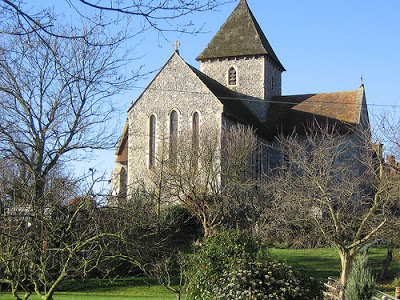One of the most challenging things for me in writing a YA novel based on the scant (and most likely apocryphal) stories “Mary of Canterbury” has been figuring out where to place her. I needed to find an old village in the countryside close to Canterbury and not far from the cliffs of Dover. Proximity to the Pilgrim’s Way of Chaucer fame would be a plus. Also, because of how my story was evolving, I needed proximity to a pond.
I had originally thought that I would “simply” fabricate such a village, but I discovered that that was far from simple—at least for me. It appears that I need a real place to dig into. Ironically, without facts, I am creatively lost.
In researching the turbulent years leading up to the accession of Queen Elizabeth I, I learned of a tiny village not far from Canterbury that was rife with conflict. Like a story-seeking missile, I had found my village.

Adisham (pronounced—I think—AD SHAM), is an old village not far from Canterbury, not far from Dover, and not far from one of the Canterbury Pilgrims’ paths. And it had had, in former times, a “dangerous pond.” How good was that?
The more I learned about Adisham, the more fascinating it became. A poltergeist in a house near the church? A witch dunked in the pond? A main street called “The Street”?
The biggest bonus was the discovery of John Bland, Protestant rector of the church of Adisham.

A “Canterbury Martyr,” John Bland was one of the first to be burned alive at the stake under the rule of Elisabeth I’s half-sister, “Bloody” Queen Mary. It is also claimed, likely falsely, that he was 103 years old when executed!
I’m about to embark on a research trip to the UK and will be visiting Adisham, talking with people who live there. I’ve already learned that they warn new rectors of what happens to those who run afoul of the churchwarden and the people of the village. :-)
Here are two links on Adisham:
This one shows numerous photos of the church, along with historical details.
Here is a link to a description of the parish, published in 1800, opening with the charming words: “This parish lies exceedingly pleasant and healthy … “



Have you yet visited Adisham?
Geoffrey, I have indeed been to Adisham. Fortunately, I made a research trip to the UK last year—before the world closed down. I was given an excellent tour. It makes a huge difference for me when writing to have been to a place.
Right now I’m doing a deep dive into research on John Bland. I’ll be posting my findings soon.
Are you from Adisham? It’s a lovely village.
I hosted Sandra’s Visit :)
Hi Robin! How nice to see you here. I hope you, your wife, and the good people of Adisham have weathered this pandemic. My WIP (writer-talk for Work in Progress) has been diverted at my publisher’s suggestion to an earlier period. It will be written, but I’m afraid it’s going to be years yet. (I’m so slow!) I think of Adisham often. Cheers, Sandra